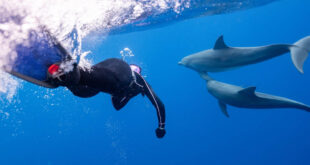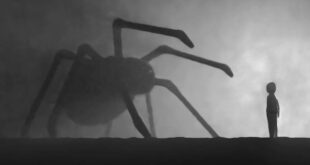Most of our planet’s islands are explored and inhabited. There, however, exists islands that are off the maps or were subjects of secret government experiments; that were later abandoned. For centuries, mankind has been exploring and finding surprising things about the very planet we call home. Scientists are still trying to figure out how new islands are made while already existing islands are disappearing without warning. At the same time, there are several islands that have been part of extensive studies for decades. Here, we are listing some mysterious islands that are shrouded with secrets.
1. La Isla de las Muñecas or Island of the Dolls is an island filled with hundreds of hanging, decomposing, and creepy dolls.

The Island of the Dolls in Mexico City is a mysterious place with a mysterious background. Almost six decades ago, Don Julian Santana had a mental breakdown and decided to leave his wife and child behind. He traveled to a remote island on Teshuilo Lake in the Xochimilco canals. Not long after moving there, he found a young woman who drowned in the lake. Soon after that, he discovered a doll, which belonged to the young woman. The moment changed Santana’s life changed forever and since then, he has devoted his life to honor this lost soul in a unique and fascinating way.
Since then, Santana has been collecting and hanging dolls by the hundreds; transforming the entire island into a doll-infested wonderland. He did not attempt to clean or fix the dolls and hung them up as they were discovered. Some locals claim that Santana was so devoted to the dolls that he traded produce for more dolls from others. In 2001, Santana was found drowned in the same area that the young woman was discovered. (source)
2. In the Miyakejima Island in Japan, residents are required to carry a gas mask at all times.

Located 180 km (111 miles) south of Tokyo, the tiny island is home to Mount Oyama, an extremely active volcano. In June 2000, Mount Oyama began a series of eruptions that resulted in the release of several toxic gases. Since the toxicity in the air was extreme and would be fatal if inhaled, the entire island was evacuated and closed to human habitation for more than four years. However, in 2005, around 2,800 residents decided to move back to the island they once called home.
Although the volcano wasn’t erupting, it was still spewing sulfuric gas. This prompted the government to take action and demand that all inhabitants carry a gas mask at all times. The island is equipped with a raid alarm that goes off when the sulfur levels get above a certain level. The 2000 eruption caused a third of the island to be off-limits and the inhabitants also have to go through mandatory health checks every year. (source)
3. Socotra Island is one of the most alien-looking places on Earth. The island has a unique tree known as the Dragon Blood Tree, which bleeds if you cut it.

The Socotra Island in the Arabian Sea was only discovered in 2010 by a team of Russian archaeologists. The island had been isolated for such a long time that it became home to some plants that cannot be found anywhere else on Earth. For example, the dragon’s blood tree, that looks like a perfectly made natural umbrella and bleeds when it’s cut down. The Russian archaeological team discovered the ruins of a city on Socotra dating back to the second century. Some believe that the island is the location of the original Garden of Eden, due to its isolation, biological diversity, and the fact that it is located on the edge of Yemen’s Gulf of Aden. (source)
4. The Diavik Diamond Mine is a massive hole, on an island, in a lake, that looks like something straight out of a science fiction novel.

The Diavik Diamond Mine in the Northwest Territories is a massive mine that is situated in Lac de Gras and is accessible by ice road for roughly two months each year. During winter, the island looks like a white desert. Located in the Archean-age Slave geologic province in northern Canada, it is one of the world’s preeminent sources of gem diamonds. Since mining operations began in 2003, it has produced over 100 million carats of diamonds.

The craters are so massive that airplanes and helicopters are not allowed to fly over them. The Diavik is now expected to operate through 2024 and upon closure, the land will be returned as closely as possible to its original condition. The mine is 2.703 mi² long and since 2012, all operations are conducted underground. (source)
5. The Snake Island (Ilha da Queimada Grande) in Brazil has so many snakes that humans are not allowed. There’s about one deadly snake per square foot on it. Only a handful of scientists wearing protective gear are allowed to study the island and its inhabitants.

Located about 25 miles off the coast of Brazil, the Snake Island is off limits to locals. It was discovered to be filled with venomous snakes after two fishermen who strayed too close to its shores were found lifeless a few days later. Since then, the Brazilian government has banned anyone from stepping foot on the island without prior permission. It is estimated that there are between 2,000 and 4,000 snakes on the island, with some species that are extremely rare and venomous. According to a local legend, the snakes were introduced by pirates who wanted to protect their buried treasure in the island. (source)
6. Bouvet Island, an uninhabited volcanic island, is the most remote in the world.

Imagine a place that is nearly covered in ice and surrounded by the coldest ocean in the world. That is what Bouvet Island is like. Although it’s not Antarctica, Antarctica is the closest piece of land to the island. Only the most daring travelers are known to visit the island. Most of the scientists who embark on expeditions are taken to the island with the help of choppers. Visiting the island using boats is difficult under good conditions and physically impossible under average conditions. The high glacial cliffs surrounding the island makes it impossible to climb it. In 1964, an abandoned boat was discovered on the island, along with various supplies. However, no survivors were found nor were their identities ever discovered. (source)
7. The Henderson Island is an uninhabited island but is also the world’s most polluted.

Located in the South Pacific Ocean, half way between New Zealand and Chile, it is one of four islands that make up the Pitcairn Group. The island is uninhabited but receives occasional visits from scientists. The nearest major landmass is more than 5,000 km (3106 miles) away. Although it is uninhabited, scientists found that the island’s white sandy beaches are littered with plastic, washed away from different parts of Earth. It was discovered that a circular ocean current that functions like a conveyor belt, is collecting trash and plastic and depositing it onto tiny Henderson’s shore at a rate of about 3,500 pieces a day.
Scientists also discovered a cave within the island that included a natural spring. Inside the cave was human remains as well as stone tools, some petroglyphs, Earth furnaces and other artifacts. Analysis of the discovered items reveal that the inhabitants lived somewhere between the 12th to the 15th centuries. (source)
8. The Clipperton Island is one of the most remote tropical islands on Earth. The small coral atoll located in the Pacific Ocean is so isolated that the nearest emerged land is almost a thousand miles from there.

Located 1,120 kilometers (695 miles) southwest of Mexico, it is named after an English pirate John Clipperton, who’s said to have used it as a hideout in the early 18th century. The island had inhabitants during the 1990’s for mining guano. By 1910, it was equipped with a lighthouse and around 100 people moved in, calling it home. The families were thriving since the mining operations were successful and every two months, a ship arrived to resupply and bring any necessary tools. However, during the Mexican Civil War in 1914, the ships stopped arriving and the inhabitants were forgotten.
With no land to farm and a limited source of freshwater, the residents suffered for years. One by one, they began to perish, until 1917, when the last survivors, 3 women and 8 children, who were clinging on to dear life, were discovered by an American ship and rescued. (source)
9. Palmyra Atoll is a lagoon surrounded by coral reefs in the middle of the Pacific Ocean. It is about 1,000 miles from the closest inhabited land — Hawaii.

Palmyra Atoll is seemingly an idyllic island paradise in the North Pacific. It is known for its quaint beauty and the local legends that claim the land to be cursed since many ships have disappeared around it. However, its remoteness helps scientists conduct scientific research that would not be possible in other places with human populations. The only inhabitants of the island are around 20 scientists who visit for a brief period every month. Visiting the island is almost impossible, since the conservation group that manages it has a long list of volunteers who wish to help with scientific research. (source)
10. The Earthquake Island is an island that was formed in Pakistan, after a 7.8 magnitude earthquake struck the country.

On September 2013, a powerful earthquake struck Pakistan. It took many lives but at the same time, created an island. Many of the country’s residents reported seeing the creation of the tiny island. Although it’s only 100 meters (330 ft) in length and 9 meters (30 ft) high, scientists believe that the earthquake could have caused the island to form. However, studies are still being conducted in order to determine the exact cause of its appearance. (source)
11. Underwater waterfall illusion at Mauritius island.

Mauritius is an island nation in the Indian Ocean about 2,000 kilometers (1,200 mi) off the southeast coast of the African continent. Located at the Southwestern tip of the island, you will find a fascinating illusion. When viewed from above, sand and silt on the ocean floor run off in a way that makes it look like they’re pouring down a waterfall. The flow of underwater currents is what creates the dramatic view, giving the impression of an ‘underwater waterfall’. (source)




